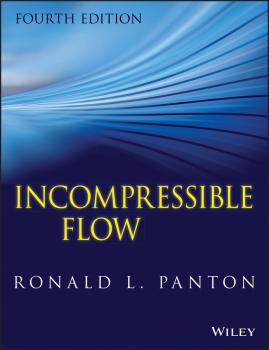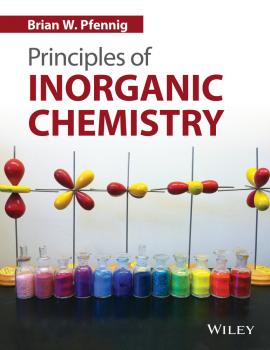Прочая образовательная литература
Различные книги в жанре Прочая образовательная литератураChromatography. Principles and Instrumentation
Provides students and practitioners with a solid grounding in the theory of chromatography, important considerations in its application, and modern instrumentation. Highlights the primary variables that practitioners can manipulate, and how those variables influence chromatographic separations Includes multiple figures that illustrate the application of these methods to actual, complex chemical samples Problems are embedded throughout the chapters as well as at the end of each chapter so that students can check their understanding before continuing on to new sections Each section includes numerous headings and subheadings, making it easy for faculty and students to refer to and use the information within each chapter selectively The focused, concise nature makes it useful for a modular approach to analytical chemistry courses
Geochemistry
This book provides a comprehensive introduction to the field of geochemistry. The book first lays out the ‘geochemical toolbox’: the basic principles and techniques of modern geochemistry, beginning with a review of thermodynamics and kinetics as they apply to the Earth and its environs. These basic concepts are then applied to understanding processes in aqueous systems and the behavior of trace elements in magmatic systems. Subsequent chapters introduce radiogenic and stable isotope geochemistry and illustrate their application to such diverse topics as determining geologic time, ancient climates, and the diets of prehistoric peoples. The focus then broadens to the formation of the solar system, the Earth, and the elements themselves. Then the composition of the Earth itself becomes the topic, examining the composition of the core, the mantle, and the crust and exploring how this structure originated. A final chapter covers organic chemistry, including the origin of fossil fuels and the carbon cycle’s role in controlling Earth’s climate, both in the geologic past and the rapidly changing present. Geochemistry is essential reading for all earth science students, as well as for researchers and applied scientists who require an introduction to the essential theory of geochemistry, and a survey of its applications in the earth and environmental sciences. Additional resources can be found at: www.wiley.com/go/white/geochemistry
Hydrometeorology
Hydrometeorology presents an introduction to relevant topics in the interdisciplinary fields of hydrology and meteorology. This book is one of the few books aiming to provide a balance between aspects of meteorological and hydrological processes. The transfer of energy and water between the land surface and lower atmosphere within the hydrological cycle is addressed followed by a description of the nature of precipitation, and how it is formed. Forecasting precipitation is reviewed on all scales, and the range of rainfall-runoff models and coastal surge models and forecasts (including tsunamis) which have been, and are being, used are discussed. The mechanisms of snow, ice (glacier, sea and tundra), evaporation and transpiration, how drought occurs and the representation of wind are described. How rainfall (including radar measurements) and river flow information is gathered and analysed (including, frequency analysis, Probable Maximum Precipitation and Flood) are presented. Satellite measurements of precipitation are discussed. Examples of major past floods and droughts are given. Past and future climate change, which is included, underpins the importance of hydro-meteorological processes. The structure of the general circulation of the atmosphere and how it influences weather and climate including the Hadley, Ferrel and Polar cells, the Trade winds and the El Nino, is outlined. Finally, the influence of urban areas on rainfall formation, dealing with urban drainage and air quality are described. Each chapter ends with one or two specific points as appendices, elements discussed in the chapter and a list of sample problems to aid understanding. Readership: This book is aimed at 3rd year undergraduate and postgraduate students on hydrology/hydrometeorology, environmental science and geography courses. Professionals in environmental protection agencies and consultancies will also find the book of great interest. It contains a balance of both the physics and mathematics which underpin such courses and activities.
Sustainable Value Creation in the Fine and Speciality Chemicals Industry
The global fine and speciality chemicals industry is a vital segment within the chemical value chain, catering to a multitude of societal and industrial needs. Regulatory, sustainability and consumer forces have been constantly shaping the business fundamentals of this industry. Developing value creation strategies, which embed economic, environmental and social sustainability components, will need a comprehensive assessment of business, scientific and technological challenges facing the industry. Sustainable Value Creation in the Fine and Speciality Chemicals Industry assesses sustainable value creation options against the backdrop of global mega trends that are defi ning the present and future course of the industry. It discusses innovative strategies in feedstocks, R&D, technology, manufacturing, resource management and the supply chain as well as the significance of the bio-based chemical economy in enabling sustainable value creation in the fine and speciality chemicals industry. Topics covered include: • Transformation in the fine and speciality chemicals business • Sustainable management: evolution, transitions and tools • Research and technology directions • Resource optimization strategies • Bio-based chemicals, specialities and polymers • Sustainable practices in the fine and speciality chemicals industry • Sustainable value creation strategies Sustainable Value Creation in the Fine and Speciality Chemicals Industry presents a comprehensive overview of strategic options for sustainability management in the global fine and speciality chemicals industry. It will be a valuable resource for chemists and chemical engineers involved in the design and development of economically, environmentally and socially sustainable practices for the future.
Incompressible Flow
The most teachable book on incompressible flow— now fully revised, updated, and expanded Incompressible Flow, Fourth Edition is the updated and revised edition of Ronald Panton's classic text. It continues a respected tradition of providing the most comprehensive coverage of the subject in an exceptionally clear, unified, and carefully paced introduction to advanced concepts in fluid mechanics. Beginning with basic principles, this Fourth Edition patiently develops the math and physics leading to major theories. Throughout, the book provides a unified presentation of physics, mathematics, and engineering applications, liberally supplemented with helpful exercises and example problems. Revised to reflect students' ready access to mathematical computer programs that have advanced features and are easy to use, Incompressible Flow, Fourth Edition includes: Several more exact solutions of the Navier-Stokes equations Classic-style Fortran programs for the Hiemenz flow, the Psi-Omega method for entrance flow, and the laminar boundary layer program, all revised into MATLAB A new discussion of the global vorticity boundary restriction A revised vorticity dynamics chapter with new examples, including the ring line vortex and the Fraenkel-Norbury vortex solutions A discussion of the different behaviors that occur in subsonic and supersonic steady flows Additional emphasis on composite asymptotic expansions Incompressible Flow, Fourth Edition is the ideal coursebook for classes in fluid dynamics offered in mechanical, aerospace, and chemical engineering programs.
Chemometrics in Excel
Providing an easy explanation of the fundamentals, methods, and applications of chemometrics • Acts as a practical guide to multivariate data analysis techniques • Explains the methods used in Chemometrics and teaches the reader to perform all relevant calculations • Presents the basic chemometric methods as worksheet functions in Excel • Includes Chemometrics Add In for download which uses Microsoft Excel® for chemometrics training • Online downloads includes workbooks with examples
History of Life
This text is designed for students and anyone else with an interest in the history of life on our planet. The author describes the biological evolution of Earth’s organisms, and reconstructs their adaptations to the life they led, and the ecology and environment in which they functioned. On the grand scale, Earth is a constantly changing planet, continually presenting organisms with challenges. Changing geography, climate, atmosphere, oceanic and land environments set a stage in which organisms interact with their environments and one another, with evolutionary change an inevitable result. The organisms themselves in turn can change global environments: oxygen in our atmosphere is all produced by photosynthesis, for example. The interplay between a changing Earth and its evolving organisms is the underlying theme of the book. The book has a dedicated website which explores additional enriching information and discussion, and provides or points to the art for the book and many other images useful for teaching. See: www.wiley.com/go/cowen/historyoflife.
Forensic Analytical Techniques
The book will be an open learning / distance learning text in the Analytical Techniques for the Sciences (AnTS) covering analytical techniques used in forensic science. No prior knowledge of the analytical techniques will be required by the reader. An introductory chapter will provide an overview of the science of the materials used as forensic evidence. Each of the following chapters will describe the techniques used in forensic analysis. The theory, instrumentation and sampling techniques will be explained and examples of the application of each technique to particular forensic samples will be provided. The reader will be able to assess their understanding with the use of regular self assessment questions and discussion questions throughout the book. The user of the book will be able to apply their understanding to the application of specific techniques to particular analyses encountered in their professional life.
Convection Heat Transfer
A new edition of the bestseller on convection heat transfer A revised edition of the industry classic, Convection Heat Transfer, Fourth Edition, chronicles how the field of heat transfer has grown and prospered over the last two decades. This new edition is more accessible, while not sacrificing its thorough treatment of the most up-to-date information on current research and applications in the field. One of the foremost leaders in the field, Adrian Bejan has pioneered and taught many of the methods and practices commonly used in the industry today. He continues this book's long-standing role as an inspiring, optimal study tool by providing: Coverage of how convection affects performance, and how convective flows can be configured so that performance is enhanced How convective configurations have been evolving, from the flat plates, smooth pipes, and single-dimension fins of the earlier editions to new populations of configurations: tapered ducts, plates with multiscale features, dendritic fins, duct and plate assemblies (packages) for heat transfer density and compactness, etc. New, updated, and enhanced examples and problems that reflect the author's research and advances in the field since the last edition A solutions manual Complete with hundreds of informative and original illustrations, Convection Heat Transfer, Fourth Edition is the most comprehensive and approachable text for students in schools of mechanical engineering.
Principles of Inorganic Chemistry
Aimed at senior undergraduates and first-year graduate students, this book offers a principles-based approach to inorganic chemistry that, unlike other texts, uses chemical applications of group theory and molecular orbital theory throughout as an underlying framework. This highly physical approach allows students to derive the greatest benefit of topics such as molecular orbital acid-base theory, band theory of solids, and inorganic photochemistry, to name a few. Takes a principles-based, group and molecular orbital theory approach to inorganic chemistry The first inorganic chemistry textbook to provide a thorough treatment of group theory, a topic usually relegated to only one or two chapters of texts, giving it only a cursory overview Covers atomic and molecular term symbols, symmetry coordinates in vibrational spectroscopy using the projection operator method, polyatomic MO theory, band theory, and Tanabe-Sugano diagrams Includes a heavy dose of group theory in the primary inorganic textbook, most of the pedagogical benefits of integration and reinforcement of this material in the treatment of other topics, such as frontier MO acid–base theory, band theory of solids, inorganic photochemistry, the Jahn-Teller effect, and Wade's rules are fully realized Very physical in nature compare to other textbooks in the field, taking the time to go through mathematical derivations and to compare and contrast different theories of bonding in order to allow for a more rigorous treatment of their application to molecular structure, bonding, and spectroscopy Informal and engaging writing style; worked examples throughout the text; unanswered problems in every chapter; contains a generous use of informative, colorful illustrations









